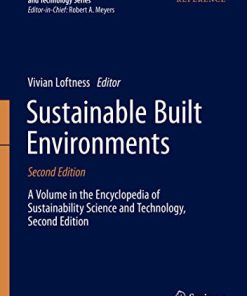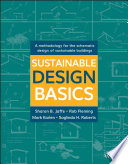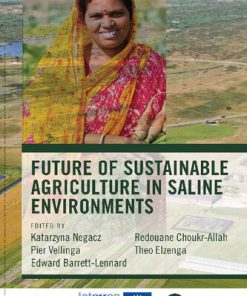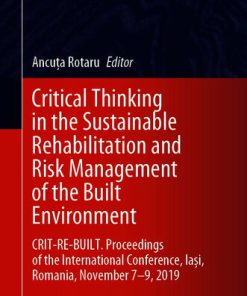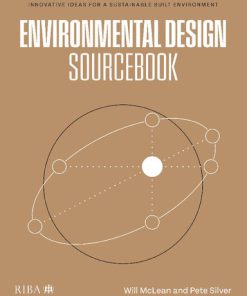Synergistic Design of Sustainable Built Environments 1st Edition by Chitrarekha Kabre ISBN 9780367564834 0367564831
$50.00 Original price was: $50.00.$25.00Current price is: $25.00.
Synergistic Design of Sustainable Built Environments 1st Edition by Chitrarekha Kabre – Ebook PDF Instant Download/Delivery: 9780367564834 ,0367564831
Full download Synergistic Design of Sustainable Built Environments 1st Edition after payment
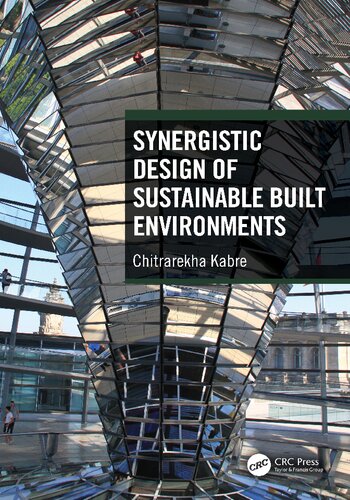
Product details:
ISBN 10: 0367564831
ISBN 13: 9780367564834
Author: Chitrarekha Kabre
Synergistic Design of Sustainable Built Environments 1st Edition Table of contents:
Chapter 1 Introduction
1.1 Background
1.2 Built Environment
1.3 Climate-Responsive Architecture
1.4 Sustainable Development and Sustainability
1.5 Technological (High-Performance) Design Paradigm
1.5.1 Technical Approach
1.5.2 Regulatory Approach
1.5.3 Rating System Approach
1.6 Biocentric (Ecological) Design Paradigm
1.6.1 Ecological Theories
1.6.2 Life Cycle Assessment
1.6.3 Systems Approach
1.7 Synergistic Design
References
Chapter 2 Climate and Thermal Comfort
2.1 Introduction
2.2 Earth and Its Atmosphere
2.3 Solar Radiation
2.4 Global Climate
2.5 Climate and Its Classification
2.6 Elements of Climates
2.6.1 Temperature and Humidity
2.6.2 Cloud and Sunshine
2.6.3 Irradiation
2.6.4 Wind
2.6.5 Precipitation
2.7 Solar Geometry
2.8 Thermal Comfort
2.8.1 Thermal Balance of Human Body
2.8.2 Parameters of Thermal Comfort
2.8.3 Thermoregulation
2.8.4 Thermal Neutrality
2.9 Environmental Indices and Comfort Zone
2.10 Cooling and Heating Degree-Days
References
Chapter 3 Thermal Environment Design Strategies
3.1 Introduction
3.2 Passive Design Strategies
3.2.1 Bioclimatic Analysis
3.2.2 Passive Solar Heating
3.2.3 Passive Thermal Mass
3.2.4 Comfort Ventilation
3.2.5 Evaporative Cooling
3.3 Hybrid (Low Energy) Design Strategies
3.3.1 Earth-Sheltered Design
3.3.2 Solar Chimney
3.3.3 Night Flush Cooling
3.3.4 Passive Downdraft Cooling
3.3.5 Passive Radiant Cooling
3.4 Thermal Behavior of the Built Environment
3.4.1 Thermo-Physical Properties
3.4.2 Sol-Sir Temperature (Tsa)
3.4.3 Space Heating Requirements
3.4.4 Space Cooling Requirements
3.4.5 Dynamic Models
3.5 Energy-Efficient Active Design Strategies
3.5.1 Space Heating Systems
3.5.2 Mechanical Ventilation
3.5.3 Air Conditioning
3.5.4 Radiant Heating and Cooling with DOAS
3.6 Solar Control Design
3.6.1 High-Performance Glasses
3.6.2 External Shading Devices
References
Chapter 4 Luminous Environment Design Strategies
4.1 Introduction
4.2 Fundamentals of Light
4.2.1 Physics of Light
4.2.1.1 Attributes of Light
4.2.1.2 Color of Light
4.2.1.3 Color of Surfaces
4.2.1.4 Transmission of Light
4.2.2 Vision
4.2.2.1 The Eye and Brain
4.2.2.2 Threshold Visual Performance
4.2.2.3 Lighting Requirements
4.2.2.4 Glare
4.2.3 Daylight Availability
4.2.3.1 Sky Conditions
4.3 Daylighting Design Strategies
4.3.1 Side Lighting
4.3.2 Top Lighting
4.3.3 Light-Guiding System
4.3.3.1 Light Shelf
4.3.3.2 Light-Guiding Shades
4.3.3.3 Prismatic Panel
4.3.3.4 Light-Guiding Glass
4.3.3.5 Laser-Cut Panel
4.3.3.6 Anidolic Ceiling
4.3.3.7 Anidolic Zenithal Openings
4.3.3.8 Anidolic Solar Blinds
4.3.3.9 Zenithal Light-Guiding Glass with Holographic Optical Elements
4.3.4 Light Transmission System
4.4 Daylight Prediction Methods
4.4.1 IESNA Lumen Method
4.4.2 Daylight Factor Method
4.4.3 Computer Modeling
4.4.4 Climate-Based Daylight Modeling (CBDM)
4.4.5 Physical Modeling
4.5 Electric Lighting as a Supplement to Daylighting
4.5.1 Electric Lighting Control
References
Chapter 5 Renewable Energy
5.1 Introduction
5.2 Energy
5.2.1 Forms of Energy
5.2.2 Sources of Energy
5.2.3 Cogeneration or Combined Heat and Power (CHP) Systems
5.2.4 Plug Load
5.3 Solar Energy
5.3.1 Solar Thermal Systems
5.3.2 Photovoltaic Systems
5.4 Wind Energy
5.4.1 Horizontal Axis Wind Turbine (HAWT)
5.4.2 Vertical Axis Wind Turbine (VAWT)
5.5 Other Renewables
5.5.1 Biomass
5.5.2 Geothermal Energy
5.5.3 Hydrogen and Fuel Cell
5.5.4 Hydropower
5.6 Energy Storage and Smart Grid
5.6.1 Electrochemical Storage
5.6.2 Mechanical Storage
5.6.3 Chemical Storage
5.6.4 Phase Change Materials
5.6.5 Smart Grid
References
Chapter 6 Design Case Studies
6.1 Introduction: Background and Driving Forces
6.2 National Oceanic and Atmospheric Administration Daniel K. Inouye Regional Center, Honolulu, Hawaii (Zone 1A Very Hot Humid, COTE 2017)
6.2.1 Design Intentions
6.2.2 Climate and Site
6.2.3 Daylight and Thermal Design
6.2.4 Energy Systems
6.2.5 Sustainable Thinking
6.3 Stanford University Central Energy Facility, Stanford (Zone 3C Warm Marine, COTE 2017)
6.3.1 Design Intentions
6.3.2 Climate and Site
6.3.3 Daylight and Thermal Design
6.3.4 Energy Systems
6.3.5 Sustainable Thinking
6.4 Edith Green–Wendell Wyatt (EGWW) Federal Building, Portland (Zone 4C Mixed Marine, COTE 2016)
6.4.1 Design Intentions
6.4.2 Climate and Site
6.4.3 Daylight and Thermal Design
6.4.4 Energy Systems
6.4.5 Sustainable Thinking
6.5 National Renewable Energy Laboratory, Golden, Colorado (Zone 5B Cool Dry, COTE 2011)
6.5.1 Design Intentions
6.5.2 Climate and Site
6.5.3 Daylight and Thermal Design
6.5.4 Energy Systems
6.5.5 Sustainable Thinking
6.6 University of Wyoming – Visual Arts Facility, Laramie, Wyoming (Zone 6B – Cold Dry, COTE 2016)
6.6.1 Design Intentions
6.6.2 Climate and Site
6.6.3 Daylight and Thermal Design
6.6.4 Energy Systems
6.6.5 Sustainable Thinking
References
Chapter 7 Climate Data and Sun-Path Diagrams
7.1 Introduction
References
Index
People also search for Synergistic Design of Sustainable Built Environments 1st Edition:
Tags: Chitrarekha Kabre, Synergistic Design, Built Environments, Sustainable
You may also like…
Housekeeping & Leisure - Interior Design & Decoration
Computers - Programming
Arts - Architecture
Biology and other natural sciences - Plants: Agriculture and Forestry
Future of Sustainable Agriculture in Saline Environments 1st Edition Katarzyna Negacz
Business & Economics - Project Management
Arts - Architecture
Arts - Architecture
Sustainable Design for the Built Environment 1st Edition Robert Michael Fleming




